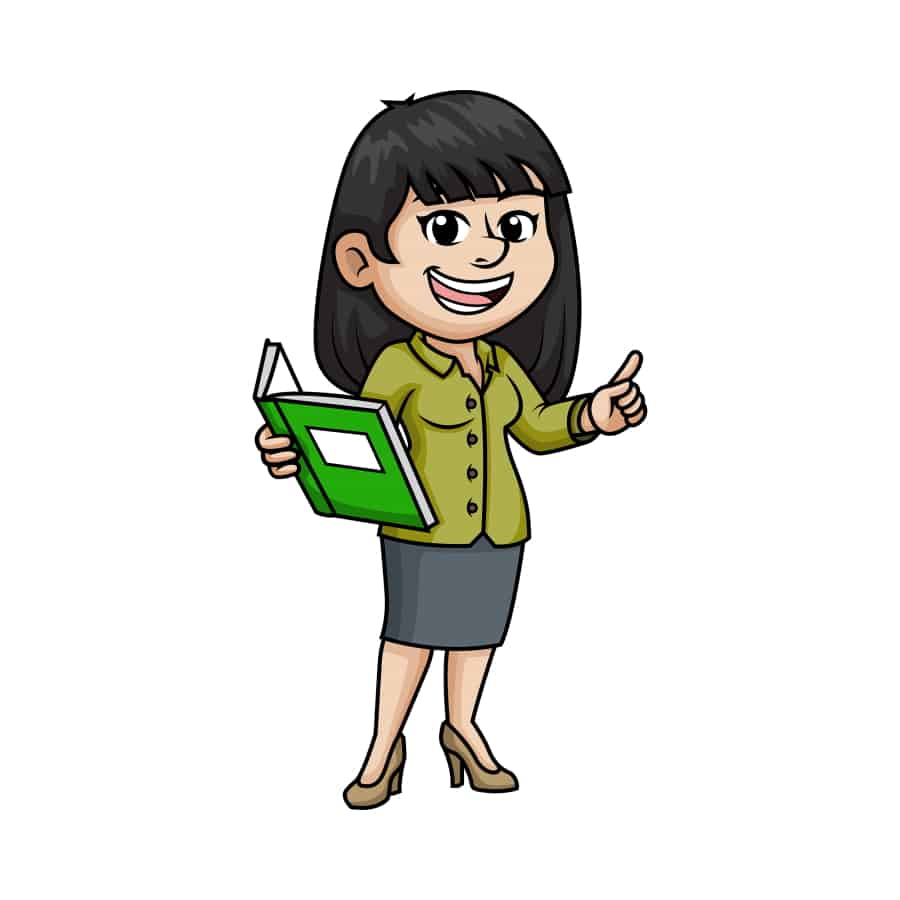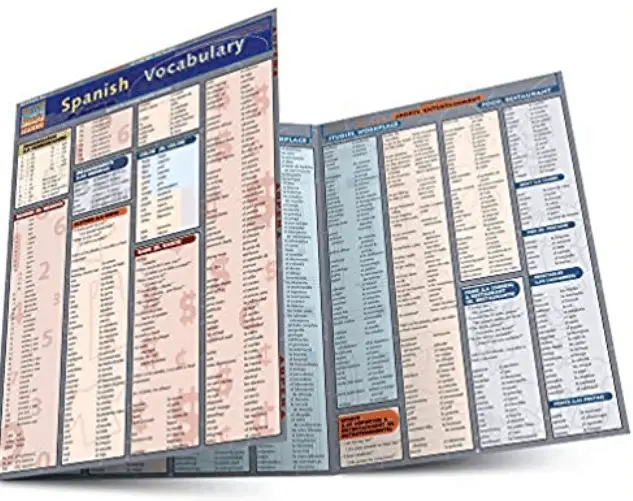
While language learning might seem like something people are just talented in, there is actually a science to Second Language Acquisition (SLA). Therefore, the more you understand the process, the easier it will be for you to successfully become fluent in a new tongue.
Second Language Acquisition (SLA) is a term to explain how second languages are acquired through natural processes. In 1982, linguist Stephen Krashen presented five defined stages in this process of becoming fluent: Pre-production, Early Production, Intermediate Fluency, and Advanced Fluency.
Anyone of any age can learn acquire a second language. It will take discipline, but the efforts are worth it. Along with understanding these stages of acquisition, there are also ways to help speed up the process, of which you will learn all about if you read on.
Contents
- 1 The Process of Second Language Acquisition
- 2 The 5 Stages of Second Language Acquisition
- 3 What Is the Best Way to Learn a Second Language?
- 4 Motivation to Learn a Second Language
- 5 Why Is It Harder to Learn a Second Language as You Get Older?
- 6 Final Talking Point on What Second Language Acquisition Really Is
The Process of Second Language Acquisition
SLA is the academic term used to define the stages involved in learning a second language after a primary language has already been established. There has been extensive research into this process.
SLA does not just refer to when a person has officially become fluent in a second language. The term also refers to the field of study devoted to SLA and the prominent theory that outlines the process. This theory includes five predictable stages of learning.
Researchers explain that the second language learning process is mostly subconscious. In fact, it occurs as learners practice and focus on communication in the new language. Basically, the more you attempt to use a second language, the more your brain absorbs it. Our brains are designed to adapt to change, after all.
The most complex aspect of SLA is not memorizing the meaning of words or mastering a new alphabet. The greatest difficulty in SLA involves learning and understanding the unique set of rules for speaking the new language.
For one of the worlds foremost strategies of second language acquisition, Benny Lewis is noted internationally for his work on changing the way many try to ‘learn’ a language and focusing on ‘speaking from day one’. To learn more about Benny’s revolutionary approach to acquiring a second or even third language, I highly recommend his step by step guides here.
The 5 Stages of Second Language Acquisition

With learning a second language comes not only a new alphabet but a new set of rules and sentence structures. Because of this, learning a second language is a process that takes time and effort.
The process of SLA happens on a continuum. You begin with simply learning the letters, how they sound, the numbers, and often memorizing a few words. Think about how most people know a few greetings in different languages. However, knowing how to say “hello” and “thank you” in another language is just the tip of the iceberg.
Determining a learner’s progress in the SLA process is outlined by the Second Language Acquisition Theory, which the theory details five stages of language acquisition, as already mentioned above.
| Stage | Time Frame | Stage Characteristics |
| Stage 1: Pre-production | 0 to 6 months | There is minimal comprehension in stage 1, and the learner will usually only be able to respond with “yes” or “no.” |
| Stage 2: Early Production | 6 to 12 months | The learner has limited comprehension and can only produce short responses. This stage is marked by familiarity with key terms and common phrases. |
| Stage 3: Speech Emergence | 1 to 3 years | This stage involves moderate levels of comprehension and the ability to have simple conversations. The learner will still make grammar and pronunciation errors often. |
| Stage 4: Intermediate Fluency | 3 to 5 years | This stage is marked by high levels of comprehension and few, if any, grammatical errors. At this point, conversations become more fluid, and jokes are understandable. |
| Stage 5: Advanced Fluency | 5 to 7 years | By this stage, the student is speaking the language near a native level. Communication involving jokes, or even slang, is attained. |
The table above only introduces the 5 Stages of Second Language Acquisition. Beyond this, each stage has its own intricacies and will require individual analysis to fully understand.
Stage 1: Pre-production
Marked by minimal, if any, comprehension of the new language, learners in the Pre-production stage of SLA are just beginning to develop familiarity with the new tongue. Researchers sometimes refer to the Pre-production stage as the silent and receptive stage.
During the Pre-production stage, which typically lasts up to six months, learners are focused on memorizing vocabulary words and mastering the common greetings of the new language. They are also developing a comfort with the new alphabet and being introduced to counting.
For example, for a learner working on Spanish as the target second language might use these quick-study word pamphlets (Amazon linked) in order to focus on the highest frequency vocabulary.
The Pre-production stage is also sometimes known as the listen and observe stage. When learners are first participating in conversations using a new language, their comprehension is so low that they are often just listening. This activity is still very important to the SLA process.
Listening is where some of the subconscious elements of SLA come into play. Even though the learner cannot participate in the conversation and likely has no idea what is being discussed, the immersion into the language is beginning to rewire their brain. Passive listening and vocabulary practice are key to moving to stage two.
Stage 2: Early Production
Upon reaching the second stage of SLA, learners will begin to communicate with short sentences and phrases. Known as the Early Production stage, learners usually spend their first six to twelve months here before moving on to stage three. The confidence developed in stage two is key in this progression.
Stage two is typically marked by the learner’s ability to join conversations with simple phrases and a limited vocabulary.
Some other distinguishing factors of achieving stage two SLA are:
- Limited comprehension
- Understanding is still higher than speaking ability
- Vocabulary acquisition is around 1,000 words
- High amount of grammar and pronunciation errors
Learners in stage two of the SLA process are beginning to develop new neural pathways that will serve as the foundation of the SLA process. A learner is considered in the Early Production stage when they feel comfortable enough to be immersed in the new language, maybe even traveling to where the language is spoken primarily.
The confidence boost that comes from being able to say hello and goodbye, get directions, find a bathroom, or ask for water allows the learner to continue to immerse themselves in the SLA process. As mentioned, immersion promotes subconscious learning and is paramount to the learning process.
Here is where Benny Lewis’s language acquisition system begins to shine. You will reach this stage very early in the process and speed to stage three in a rapid pace. Take a look at his FITM system here.
Stage 3: Speech Emergence
The third stage of the SLA process normally spans from year one to year three. If a learner is devoting a significant amount of time to studying or has been fully immersed in the culture and environment of their new language, then it is possible to move through this stage faster.
Stage three is marked by the initial emergence of comfortable speech. The learner’s grammar, punctuation, and sentence structuring will still be full of errors, and it will be obvious to those fluent in the language that they are learning. Still, the learner will be able to hold a casual conversation at this point.
Characteristics of stage three involve moderate levels of comprehension with speech ability at or near the same level. The learner’s vocabulary bank in the second language will have reached 3,000 words, and their pronunciation will be accurate with most of the common words from the new language.
In stage three, the learner’s speech will still be prone to grammatical errors, but conversations will have become more fluid. They will be comfortable pronouncing most words, only having issues with less used nouns such as place names. Stage three is also where learners are usually able to begin reading and writing in their new tongue.
Stage 4: Intermediate Fluency
Stage four usually lasts about a year after reaching the speech emergence stage and usually encompasses the time frame from year three to year five of the learning process.
The transition from speech emergence to fluency is an exciting stage for learners.
When a learner has reached stage four of the SLA process, they will have retained as many as 6,000 vocabulary words in their new language. One of the most impactful aspects of stage four involves the learners increased ability to read and write more complex sentences.
This increase in literacy is considered to solidify the subconscious aspects of the SLA process. Learners in stage four can comprehend at a high level and maintain conversations with little to no grammatical or pronunciation errors. Learners in stage four also often report thinking and dreaming in the new language.

The aspects of the SLA process that learners in stage four are still working on usually involve the inability to understand some jokes, issues with slang, and an absence of a recognizable accent. For all intents and purposes, once you reach stage four of the SLA process, you can say you are fluent in that language.
Stage 5: Advanced Fluency
The last and final stage of the SLA process is typically reached between year five and year seven of the process. While advanced fluency is the final stage described in the SLA theory, it can take up to ten more years before a learner has attained mastery of the second language’s subtle nuances and complexities.
Once a learner has reached the advanced fluency stage of the SLA process, they will possess a vocabulary of over 10,000 words and be able to hold complex conversations. This stage is also marked by the ability to pick up on jokes and some slang. Grammatical and pronunciation errors would be few and far between.

A learner in stage five will be comfortable reading, writing, speaking, thinking, and even dreaming in their new language. The table below highlights some key attributes of each of the five stages of SLA:
| Stages of SLA | Vocabulary | Grammar & Pronunciation | Communication & Literacy |
| Pre-production | Less than 500 words | The learner has not yet begun to learn grammar or pronunciation. | Communication consists of nods. Comprehension is low. Literacy is non-existent. |
| Early Production | 1,000 – 1,500 words | Learners have begun to study grammar and pronunciation rules. | Communication consists of greetings and short phrases. Comprehension has only increased slightly. Reading and writing practices start in the next stage. |
| Speech Emergence | 3,000 – 3,500 words | Learners have attained familiarity with the rules for grammar and pronunciation but are still error-prone. | Communication and comprehension start to even out, and simple conversations are more fluid. This is the stage where literacy typically begins. |
| Intermediate Fluency | 6,000 – 7,000 words | Learners have a full understanding of the rules surrounding grammar and pronunciation. Errors are uncommon. | Conversations can be complex, and the exchange is fluid. The learner is able to read and write in their new language. |
| Advanced Fluency | 10,000 words or more | Grammar and pronunciation errors are mostly non-existent. | The learner begins to develop an accent and is able to understand jokes. They are considered literate in the new language. |
Reaching the advanced fluency stage of the SLA process implies full second language acquisition and is a very rewarding milestone. To reach mastery of their new language, learners must continue to develop their skills through study and cultural immersion.
What Is the Best Way to Learn a Second Language?
Learning a second language requires diligence and access to opportunities for immersion and engagement. The most effective way to learn a second language is to understand how subconscious learning takes place over the five stages. (Here’s another article I’ve written about best practices.)
Second language proficiency requires the ability to communicate, comprehend, and read and write in the new language. The importance of immersion in the early stages and literacy practice in the later stages can not be understated. Developing fluency requires regular practice.
Here are some other helpful tips and strategies listed below:
- Learn with a friend or partner, that way you can practice together.
- Talk to yourself, even recording yourself to listen to later.
- Watch films or listen to music in the new language.
- Do not be hard yourself. The process is long and difficult. You have to enjoy it.
- Know your motivation. Why are you trying to learn a second language?
By combining an understanding of the five stages of the second language acquisition process with diligence, continued effort, and some of the strategies listed above, you will have all the tools to learn a second language.
Motivation to Learn a Second Language
There are many benefits to learning a second language. Some people just like to learn, while others may find it increases their earning potential. Five of the most common reasons to learn a second language are highlighted below:
- Learning a new language is good for your brain. Studies have proven that being bilingual can help reduce the impacts of mental and cognitive decline as you age. (I’ve addressed effects on the brain here, as well.)
- Advance your career or find new opportunities. Showing you are bilingual on your resume can set you apart from other candidates. You also have access to markets and products that your competitors may not.
- Travel and experience other cultures. Some languages are spoken in places throughout the world that no longer use that language primarily but do not speak English. Traveling when you can communicate fluently increases the value of your experience.
- Becoming bilingual or even multilingual boosts your confidence. The learning process is humbling, and by successfully learning a new language, you get to benefit from the sense of accomplishment.
- Increase the strength of your decision making. Studies show that thinking in a second language when making a big decision allows you to distance yourself and be more pragmatic.
These are just a few of the reasons to learn a second language. It is also important to note that many scientists believe learning a third or fourth language is substantially easier once someone has learned a second language. This has to do with how the brain adjusts to change.
Why Is It Harder to Learn a Second Language as You Get Older?

It is not a myth. Learning a second language gets more difficult as you age. The main issue has to do with neuroplasticity. As you age, your brain’s ability to change in response to new experiences is diminished.
There is still much debate about this issue. Scientists do not all agree on the exact age where language learning becomes more difficult. Some scientists believe it could be as young as 10, while others argue it is closer to 17-18. There have also been more recent studies that claim some variables contributing to SLA do not occur until later in life.
Do not let this discourage you. It is never too late to start the second language acquisition process. While learning a new language may be more difficult as you age, it is not impossible. Additionally, tons of language learning platforms on the market use the SLA theory to create their lessons.
There is some more good news. Research has found that becoming a polyglot, someone who speaks multiple languages, becomes increasingly easy after learning a second language. Once you have put in the effort to learn a second language, why not learn a few more?
Final Talking Point on What Second Language Acquisition Really Is
Second Language Acquisition refers not only to the act of learning/acquiring a second language but also to the theory and study of the process. Learning a second language can be difficult and requires diligence. The benefits are well worth it and can often be life-changing.
By developing an understanding of the conscious and subconscious processes associated with SLA, you can set yourself up to successfully learn a new language at any age. Acquisition is more difficult the older we get, but not impossible.
Continued study and practice, and immersion strategies, are key to success in becoming fluent in a new language. It is worth it!
Sources
https://www.sciencedirect.com/topics/psychology/second-language-acquisition

